Across the African continent, industries like mineral mining, agricultural processing, and small-scale manufacturing are emerging as core drivers of economic growth. Nearly all these sectors rely on air compressors—especially efficient, stable screw air compressors—to keep operations running. However, remote regions in Africa (such as northern Ghana’s mining districts, western Kenya’s farms, and remote construction sites in Zambia) face a universal challenge: low grid coverage and frequent power outages. According to the African Development Bank, grid access in rural Africa is less than 30%; some mining and farming communities are completely off the public grid. Even in areas connected to the grid, daily power outages often last 4–6 hours. Traditional screw air compressors, which depend on grid power, often “fail to deliver” in such scenarios. Frequent shutdowns directly cause production disruptions and rising costs.
This is where “diesel generator-powered” screw air compressors—designed specifically for remote African areas—come in as a game-changing solution. They retain the core advantages of screw air compressors (energy efficiency, durability) while featuring power-adapted designs that perfectly match the output characteristics of diesel generators. For users in remote African regions, this means breaking free from reliance on unstable grids and achieving 24/7 continuous production.
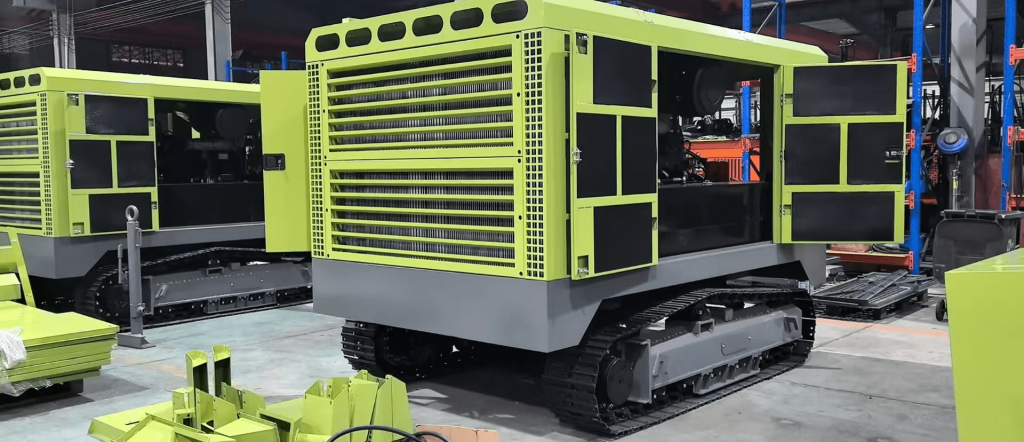
I. First, Why Screw Air Compressors Are Non-Negotiable for Remote African Areas?
Before diving into power solutions, it’s critical to understand: Why do remote African regions need screw air compressors more than other types (e.g., piston compressors)? The answer lies in how the core traits of screw air compressors align with the unique needs of African remote operations:
1. Low Maintenance Needs: Ideal for “Limited Local Technical Support”
Remote African areas often lack professional air compressor repair teams. If equipment requires frequent maintenance, not only will costs rise, but long downtimes may occur due to spare part shortages or delayed repairs. Screw air compressors, however, have a simple core structure (twin-screw rotors) and no wear parts (like valve plates or piston rings) found in piston compressors. Under normal use, their average maintenance interval reaches 8,000–10,000 hours—2–3 times longer than piston compressors. For example, a cashew processing plant in Kenya uses a screw air compressor that only needs 2 filter changes and 1 oil change per year. Local workers can complete these tasks after basic training, eliminating the need to bring in technicians from distant cities.
2. High Energy Efficiency: Reducing Pressure from “High Energy Costs”
Energy costs (whether diesel, gasoline, or limited grid power) are generally high in remote African areas. The specific power consumption (energy used per cubic meter of compressed air) of screw air compressors is only 70–80% that of piston compressors. Take a 50HP (≈37kW) screw air compressor: running 10 hours a day, it saves approximately 200 liters of diesel monthly (when powered by a diesel generator) compared to a piston compressor of the same power. At Africa’s average diesel price of 1.5–2 per liter, this translates to 300–400 in monthly savings—a significant sum for small and medium-sized African enterprises (SMEs) with tight profit margins.
3. Stable Air Output: Meeting the “Continuous Production” Imperative
Industries in remote Africa (e.g., pneumatic rock drills in gold mining, pneumatic sorting equipment in coffee processing) demand highly stable compressed air. Even short interruptions can lead to product waste or, in mining, safety risks. Screw air compressors use continuous meshing of twin rotors to compress air, resulting in a pressure fluctuation of only ±0.1 bar—far lower than the ±0.5 bar of piston compressors. This ensures a steady air supply for equipment. For instance, a gold mine in Ghana reduced the failure rate of its pneumatic rock drills from 5 times per month to just 1 after switching to a screw air compressor, boosting mining efficiency by 25%.
II. The Core Pain Point: How Grid Outages “Paralyze” Screw Air Compressors (And the Costs Involved)
Despite their advantages, “grid reliability” remains the biggest barrier to using screw air compressors in remote Africa. Two real-world scenarios illustrate the impact of power outages on production:
Scenario 1: A Remote Copper Mine in Zambia
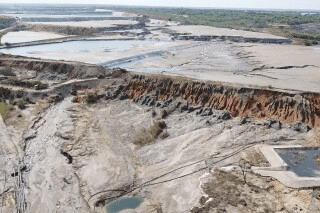
A medium-sized copper mine relied on grid-powered screw air compressors to supply air to its pneumatic mining equipment. The local grid experienced an average of 3 outages per day, each lasting 1–2 hours. Every outage forced mining equipment to stop immediately; when power was restored, the compressors required 20–30 minutes to restart and build pressure. Due to outages alone, the mine lost 4–5 hours of production daily, resulting in a monthly reduction of 150 tons of copper ore. At a copper price of 8,000 per ton, this translated to 1.2 million in direct monthly losses. Worse, frequent start-stops shortened the compressor motor’s lifespan: a motor that should last 5 years needed replacement after just 2, adding an extra $20,000 in repair costs.
Scenario 2: A Cashew Processing Plant in Eastern Tanzania
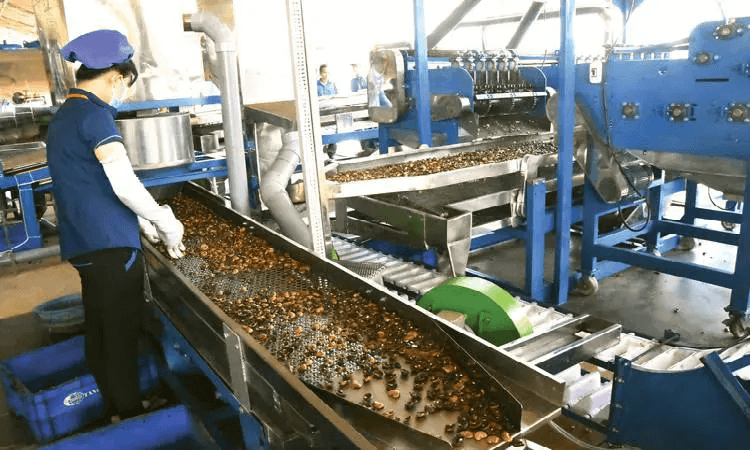
Cashew processing relies on pneumatic equipment for peeling, sorting, and drying. If air compressors shut down, unprocessed raw cashews spoil within 24 hours. A single 4-hour grid outage at one plant ruined 5 tons of raw cashews—costing 15,000 (based on a raw cashew purchase price of 3,000 per ton). To mitigate outages, the plant tried using a small gasoline generator for backup power. However, traditional screw air compressors couldn’t handle the generator’s unstable voltage, tripping frequently and failing to operate normally.
These cases confirm a critical truth: In remote African areas, “reliable power supply” matters more than “compressor performance itself.” Diesel generator-powered screw air compressors are specifically engineered to solve this core problem.
III. Key Design Innovations: How Screw Air Compressors Adapt to Diesel Generators? 3 Core Technical Breakthroughs
Not all screw air compressors work with diesel generators. The electrical systems, startup methods, and load adjustment logic of standard screw air compressors are incompatible with diesel generators’ output traits (voltage fluctuations, power limits). Forcing compatibility can cause tripping, motor burnout, or even generator damage. By contrast, models designed for remote African areas achieve “seamless adaptation” through three targeted innovations:
1. Wide Voltage Range: Handling Generator “Voltage Fluctuations” Without Tripping or Burnout
Diesel generators—especially small portable ones—often have unstable output voltages, with fluctuations of up to ±10% (e.g., a 380V-rated generator may output 342–418V). Standard screw air compressors only tolerate ±5% voltage variation; beyond this range, they trigger protective tripping.
Adapted models use a wide-range voltage controller to extend the tolerance to ±15% (323–437V). They also include a built-in voltage stabilization module that adjusts input current in real time, ensuring the motor runs stably even during voltage swings. For example, at a farm in Nigeria powered by a 100kVA diesel generator (with ±12% voltage fluctuations), an adapted screw air compressor operated normally without a single trip.
2. Soft Start Design: Avoiding “Startup Surge” to Protect Both Generator and Compressor
Screw air compressor motors have a startup current 5–7 times their rated current (e.g., a 50HP motor with a rated current of 70A may have a startup current of 350–490A). Diesel generators have limited “instantaneous overload capacity”; excessive startup current can cause the generator’s voltage to drop sharply or even stall. Standard screw air compressors use direct startup, making them unusable with generators.
Adapted models feature a star-delta soft starter or variable-frequency soft start technology, reducing startup current to 2–3 times the rated value (140–210A for a 50HP motor). This drastically lowers the impact on the generator. For instance, a 50HP adapted model only requires an 80kVA diesel generator to start (a standard model needs 120kVA or more). This not only cuts generator procurement costs (an 80kVA generator is ~$15,000 cheaper than a 120kVA unit) but also reduces diesel consumption (smaller generators are more fuel-efficient).
3. Load Adaptive Adjustment: Matching Generator “Power Limits” to Prevent Overloading
Diesel generators have a fixed rated power; if the compressor’s load exceeds this limit, the generator will shut down due to overload. Screw air compressor loads vary with air demand (e.g., simultaneous use of multiple pneumatic tools in mining causes sudden load spikes). Standard models have slow load adjustment responses, making overloads likely.
Adapted models use smart load sensors to monitor the generator’s output power in real time. When power approaches 90% of the generator’s rated capacity, the compressor automatically lowers its discharge pressure (e.g., from 0.8MPa to 0.7MPa) to reduce load. When air demand decreases and power headroom increases, it restores pressure automatically. This ensures the compressor always operates within the generator’s power limits, avoiding overload shutdowns. At a gold mine in Ghana, when 3 pneumatic rock drills were used simultaneously (pushing the compressor load to 85% of the generator’s rating), the unit lowered pressure automatically—maintaining basic rock drilling operations (0.7MPa is sufficient for drilling) without overloading the generator.
IV. On-Site Applications: 4 Core Sectors in Remote Africa—How to Boost Production with Adapted Compressors
Diesel generator-powered screw air compressors are not “one-size-fits-all.” They require tailored solutions for different industry needs. Below are real-world application cases for 4 key sectors:
1. Mining: 24/7 Continuous Air Supply, Adapted to Small Generators + Mobile Operations
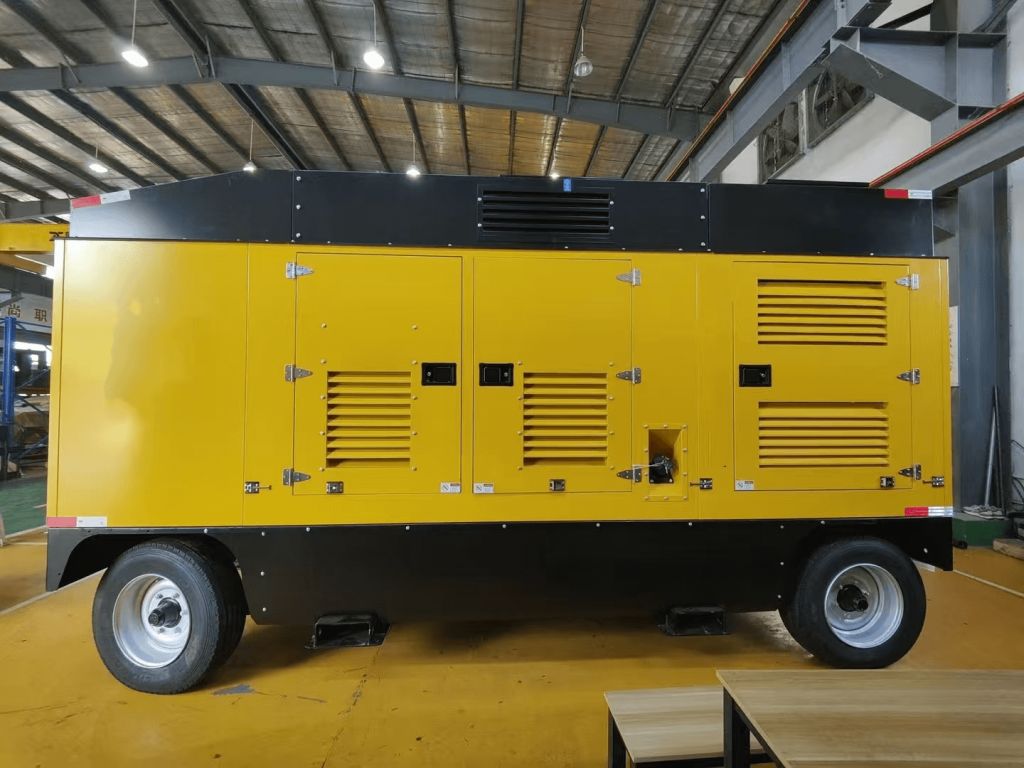
Most remote African mines are small to medium-sized, typically using 100–200kVA diesel generators. Many mining sites also require mobile operations (e.g., different workfaces in open-pit mines). To meet this need, adapted models feature a mobile design (with tow hooks and tires) for easy transport by pickup truck to different work areas. They also support “multi-machine parallel operation”: if one compressor’s air output is insufficient, two units can be connected in parallel to share a single generator—meeting higher air demand.
For example, a small gold mine in Zambia uses two 37kW (50HP) mobile adapted compressors with a 150kVA diesel generator to power 4 pneumatic rock drills and 2 pneumatic loaders. This setup enables 24/7 continuous mining. Compared to its previous grid-dependent operation, the mine increased monthly production days from 20 to 28, boosting output by 40%. The combined daily diesel consumption of the generator and compressors is only 80 liters—keeping costs manageable.
2. Agricultural Processing: Low Fuel Consumption + Stable Air Supply to Prevent Crop Waste
African agricultural processing (cashews, coffee, cotton) demands both “stability” and “energy efficiency” from compressors: stable air supply prevents crop waste, while low fuel consumption cuts costs. Adapted models optimize the oil-air separation system for agricultural use, reducing specific power consumption to below 6.5kW/(m³/min) (vs. ~7.0kW/(m³/min) for standard models). A 100HP adapted unit running 12 hours a day saves 15 liters of diesel compared to standard models.
A cashew processing plant in Tanzania uses a 75kW (100HP) adapted compressor with a 120kVA diesel generator to achieve year-round uninterrupted processing. Since installation, no crop waste has occurred due to power outages. Monthly diesel costs are also $800 lower than when using grid power + a standard compressor (grid electricity fees + occasional emergency generator use were more expensive).
3. Small-Scale Manufacturing: Adapting to “Low-Cost Generators” to Lower Entry Barriers
Small manufacturing facilities in remote Africa (e.g., metalworking, furniture production) have limited budgets and often use second-hand or low-cost diesel generators (50–80kVA). These generators have larger voltage fluctuations and weaker overload capacity. To address this, adapted models are available in smaller power versions (15HP, 22HP, 37HP). The smallest model only requires a 30kVA generator to operate and costs 30% less than large models—lowering the entry barrier for SMEs.
A metalworking shop in Kenya uses a 22HP (16kW) adapted compressor with a 50kVA second-hand diesel generator to power pneumatic drills and bending machines. Monthly diesel costs are just 600—half the cost of grid power (which previously cost 1,200 monthly). The shop also eliminated outage-related downtime, increasing production efficiency by 30%.
4. Construction Projects: Durable in Harsh Conditions + Easy Maintenance for Site Use
Remote African construction projects (road building, small dams) often operate in harsh environments (high temperatures, dust, humidity) with limited maintenance resources. Adapted models use IP54-rated motors and electrical systems to resist dust and splashing water, enabling normal operation even at 45°C. Maintenance is also simplified: filter and oil change steps are standardized, allowing workers to perform tasks using illustrated manuals—no professional skills required.
For example, a road construction project in Ethiopia uses two 50HP adapted compressors with a 100kVA diesel generator to power pneumatic jackhammers and air picks. During 3 months of continuous operation in dusty conditions, the units only required 2 routine maintenance checks and no breakdowns—ensuring the project was completed on schedule.
V. Addressing User Concerns: Will Diesel Generator Power Increase Costs? 3 Key Advantages
Many African users worry: “Will diesel generator power be more expensive than grid power?” In reality, when combined with adapted screw air compressors, the total cost is lower—with three core advantages:
1. Controllable Diesel Costs: Energy-Efficient Models + On-Demand Power = Cheaper Than “Grid + Backup Generator”
Grid electricity in remote Africa is expensive (up to 0.3–0.5 per kWh in some areas), and users often pay “standby capacity fees” (charges for reserved power even if unused). By contrast, diesel generator + adapted compressor systems only generate power when needed (during production hours). The energy efficiency of adapted models further reduces costs.
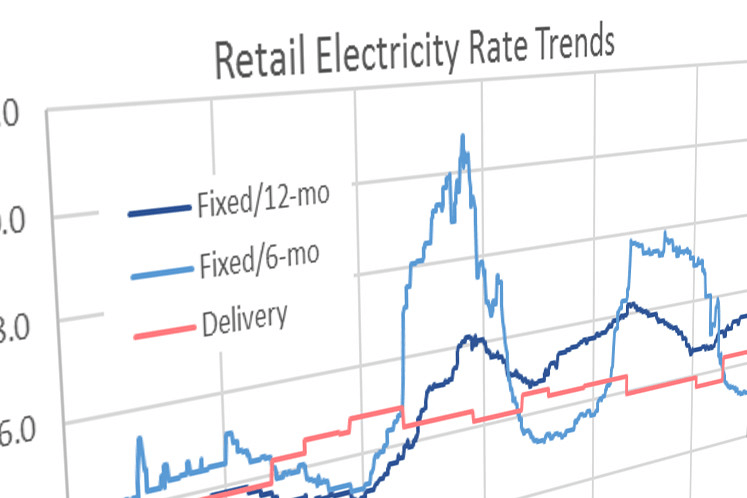
Take a 50HP compressor running 10 hours a day:
- Grid Power: 0.4 per kWh; motor power = 37kW. Daily electricity cost = 37kW × 10h × 0.4/kWh = 148. Adding a backup generator (used 5 times monthly, 20 liters of diesel per use): Monthly extra cost = 5 × 20L × 1.8/L = 180. Total monthly cost = (148 × 30) + 180 = 4,620.
- Diesel Generator Power: Adapted compressors use 15% less fuel than standard models. Daily diesel consumption = 37kW × 10h × 0.25L/kWh (diesel generator fuel efficiency) × (1–15%) = 79.6L. Diesel price = 1.8/L. Daily cost = 79.6L × 1.8 ≈ 143. Total monthly cost = 143 × 30 = $4,290.
Diesel generator power saves $330 monthly—while eliminating outage losses entirely.
2. No “Downtime Losses”: Hidden Savings Far Exceed Diesel Costs
As shown in previous cases, outage losses (e.g., reduced mining output, spoiled crops) in remote Africa are far higher than diesel expenses. After switching to an adapted compressor, a Zambian copper mine reduced monthly copper ore losses by 150 tons (1.2 million) while only increasing diesel costs by 4,290. The return on investment (ROI) is 280:1—making diesel costs negligible.
3. “Multi-Purpose” Generators: Spreading Costs to Improve Value
Diesel generators can power more than just air compressors—they also supply electricity to lighting, water pumps, and small processing machinery. This shares the generator’s procurement cost across multiple uses. For example, a farm in Tanzania uses one 120kVA generator to power an air compressor, irrigation pumps, and a grain dryer. The compressor effectively “shares” the generator for free, further lowering overall costs.
VI. Selection Guide: 4 “Must-Check” Parameters for Screw Air Compressors in Remote Africa
When choosing a diesel generator-powered screw air compressor, don’t just focus on “generator compatibility.” Prioritize these 4 parameters to match the unique needs of remote African areas:
1. Temperature Adaptability: Minimum -5°C to 45°C to Handle Extreme Climates
Many African regions have large day-night temperature variations (e.g., northern South Africa: 0°C at night, 40°C during the day). Mining and desert areas may exceed 45°C in summer. Standard compressors often suffer from reduced oil viscosity or motor overheating in high temperatures. Choose models rated for -5°C to 45°C or higher, and use high-temperature oil (e.g., ISO VG 68 high-temperature air compressor oil).
2. Fuel Tank Capacity: Minimum 8-Hour Continuous Operation to Reduce Refueling
Diesel supply is often unstable in remote Africa, and some sites are far from gas stations. Frequent refueling increases workload. Opt for models with a fuel tank capacity of ≥50L (a 50HP unit uses ~80L of diesel in 8 hours, so a 100L tank is ideal). This ensures 8–10 hours of operation per refuel—reducing refueling frequency.
3. Spare Part Universality: Choose “Globally Standard” Parts for Local Availability
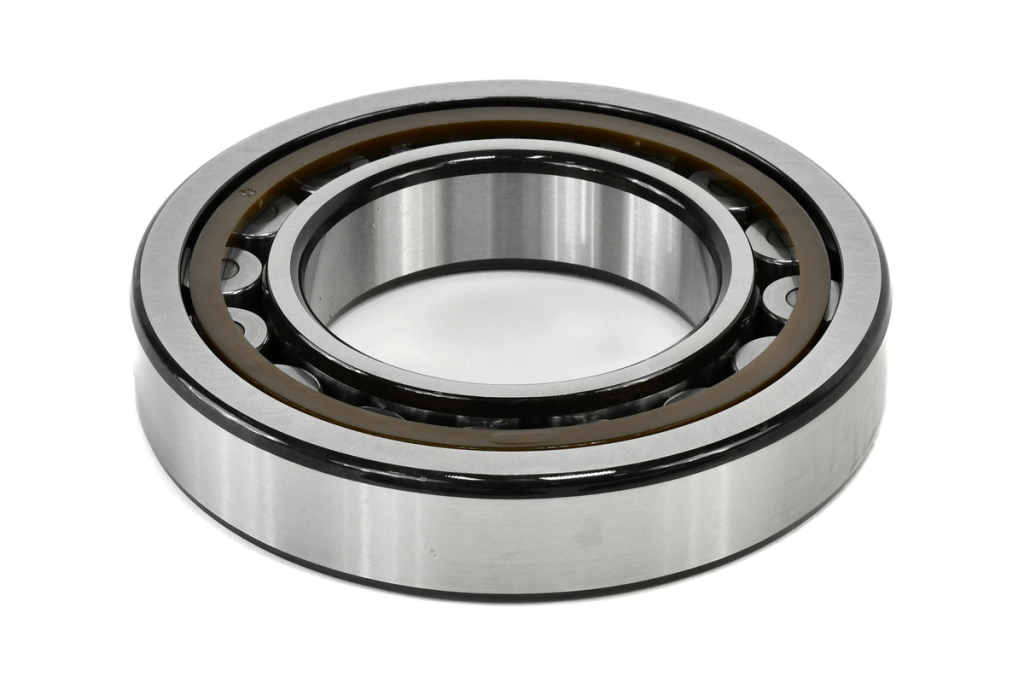
Spare parts are hard to source in remote Africa. If a compressor uses proprietary parts (e.g., special filters or bearings), replacements may require overseas shipping—with lead times of 1–2 months. Select models with ISO-standard spare parts (e.g., ISO-standard oil filters, universal bearings). These parts are available in major African cities (Lagos, Johannesburg, Nairobi) at local hardware markets, cutting repair times to 1–2 days.
4. After-Sales Service: Confirm “Local Service Centers” or “Remote Support”
While adapted models require minimal maintenance, breakdowns can still occur. Choose brands with local service centers (e.g., in South Africa, Nigeria, Kenya) or those offering “remote video support + spare part delivery.” This avoids long downtimes due to delayed service. For example, one brand has a service center in Accra, Ghana, offering 24-hour response times and local spare part warehouses for fast repairs.
VII. Conclusion: More Than “Solving Outages”—A “Production Stabilizer” for Remote Africa
For businesses in remote African areas, diesel generator-powered screw air compressors are more than “equipment”—they are “critical infrastructure” that enables independence from unstable grids and ensures stable production. From 24/7 mining in Zambia to zero-waste cashew processing in Tanzania and 50% cost reductions in Kenyan factories, these cases prove: An air compressor “adapted to local needs” delivers tangible value to remote African industries.
If your business operates in remote Africa or plans to expand into African markets, start with the core pain point of “stable power supply” and choose a screw air compressor designed for local conditions. It won’t just solve outage problems—it will become a reliable partner in boosting efficiency and cutting costs.

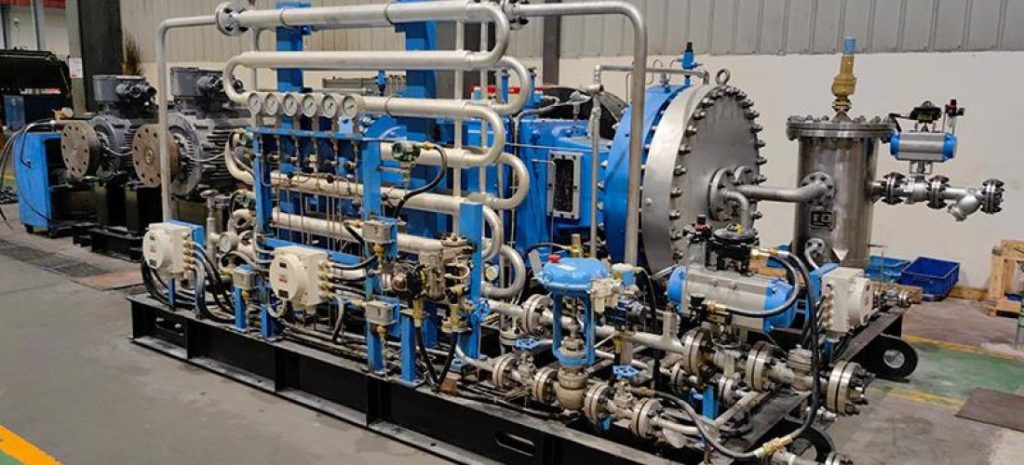
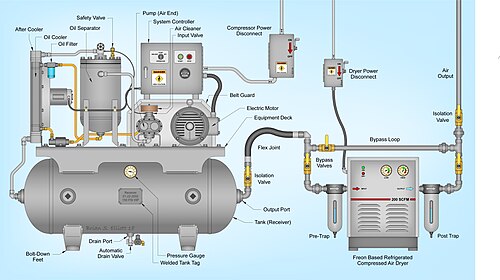
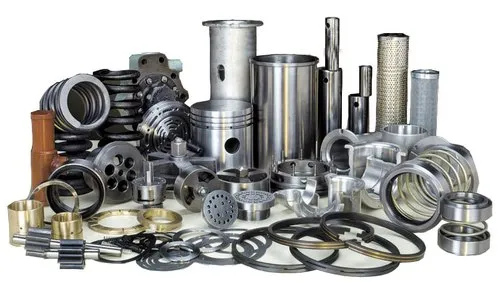

 Email
Email sales:+86 15366749631
sales:+86 15366749631

